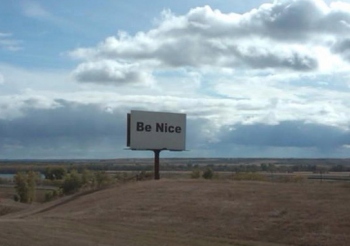Minimalism Defined
Respecting the ground we are given... and taking what it gives us
Since the opening of High Pointe in 1989, our work has been praised as the foundation of a new "minimalist movement" in golf course design. However, we have found that a lot of people misunderstand the term "minimalism" and as a result, our competitors want to typecast us. "Minimalist" is a label an eminent golf writer thrust upon us, not one we have chosen to wear. But we’ve been carrying it around for 20 years so we should define it, as it applies to the art of golf design.
Today it is politically correct for every designer to talk about “working with the land.” However, in their next breath, most other designers go on to dismiss minimalism as impractical, except on the most special sites. They lament that the good pieces of land are all gone, and complain about modern environmental restrictions.
For the most part, minimalism is just good common sense, a refusal to let arbitrary design ideas outweigh the realities of the site. Instead of reshaping a severe slope, we try to figure out how to use it to make a golf hole interesting. If it is just too severe, we’ll try a sequence of holes that avoids it entirely. The bulldozer is our third and last option.
This philosophy of design doesn’t mean we can only work on perfect property. On the contrary, when you are dealing with a severely hilly and rocky site like Stone Eagle, or a dead flat site like Texas Tech, the ability to figure out how to make good golf holes while moving less earth is more important than ever.
Restraint in earthmoving sets off a chain reaction of savings in the overall project budget. Besides adding local character to a golf course, natural areas don’t need to be irrigated, seeded or highly maintained for the life of the course. We never create pockets that have to be artificially drained when the natural surface drainage will suffice. Every contour that can be left alone saves topsoil stripping and replacement.
We have been fortunate to work on some extraordinary sites, and we have shown how much we can get out of them while leaving their souls intact. By the same token, other designers might have dismissed a site like Riverfront as a dull property and we managed to find an interesting golf course without moving any more earth on the fairways than we did at Pacific Dunes. Good detail work goes a long way.
We do understand how to move earth when the need arises, whether it’s to add interest to a flat site or to soften a steep one. In fact, you have to be really good at moving earth to conceal what you’ve done, when the surrounding landscape is untouched. We take any edge of disturbance, be it a clearing line or the end of a section of major earthwork, and strenuously examine and finesse it until it is blurred beyond recognition. This is the key to producing a new course that looks like it’s been there for 100 years.
The greatest compliment we can receive is for someone to look at our work and say, “Well, they had a great site so they didn’t really have to do very much, the course was laying there already.” The truest test of ability is to make the work look easy.
For more on Minimalism, read Tom's essay, Play It As It Lies, The Minimalist Manifesto.

